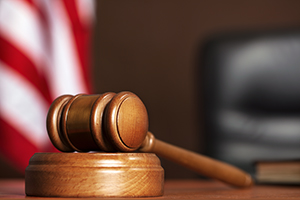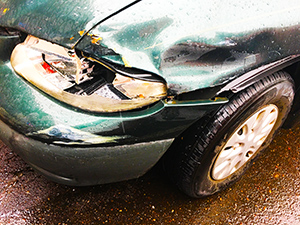We call it auto insurance because the vehicle is the focus of what we cover. Right? Maybe. When the first person bought an automobile insurance policy, the driver's biggest concern was the value of the car. They were rare and not easily replaced. They didn't move very fast, so injury to the humans onboard was of little concern.
Most automobile owners today see cars as just hunks of metal and plastic that have value, yes, but are disposable. I'll admit, some drivers consider their vehicle as the most prized possession they own and will spend a small fortune in time and money to care for it. Should something happen to their baby, they fall to pieces. Cars typically have a fixed cost and can be replaced or repaired with like-kind and quality replacement parts. Factory parts required to repair a damaged automobile are scarce and often take months to ship. The shortage of used cars has driven up the cost of repair and replacement. The bottom line is that insurance companies must raise prices to remain profitable in light of the increasing costs of repairs.
Over time, auto insurance policies evolved to cover passengers for medical bills in the event of an accident. Now, more than ever, the focus is on the human, not on the car’s value so much. Insurance companies rank cars on safety and the number of potential injuries (they count the seats in the car, no joke). If the vehicle ranks higher for safety, the price of insurance is lower.
So, the big question is, how much does it cost for a human to receive medical care in a hospital? The price of auto insurance is directly tied to the rising cost of medical care. Hospitals are understaffed and overworked. Pharmaceutical supplies are short and in high demand. Qualified administrative staffing in clinics and hospitals also suffers. All this translates to a higher medical bill that the auto insurance company must pay after a car crash.
Now is the time to drive as safely as you can. Take care of the most important thing you have, and it’s not your car—it’s your health and that of your passengers. Slow down; it’s not worth the months of delay in getting your vehicle repaired and the horrendous cost of medical bills that may exceed the policy limit.
We now live in a digital world. I worked toward an entirely paperless office in the first three years of my career. I achieved that goal in September 1996. Even before ‘the cloud’ was a thing, I created a Virtual Private Network (VPN) that connected four offices and two homes, enabling us to access our data securely from almost anywhere. Now that ‘the cloud’ has developed, I don’t have to maintain that network. It’s done for me. Finally.
 Auto liability claims can take a considerable amount of time to investigate and settle. If the fault of an accident is in question, all drivers, passengers, and witnesses must be interviewed whenever possible. Often, investigators from all sides must visit the scene and review police reports to piece together what happened as it unfolded. If someone received severe injuries or died because of the accident, the conclusion may take months to settle.
Auto liability claims can take a considerable amount of time to investigate and settle. If the fault of an accident is in question, all drivers, passengers, and witnesses must be interviewed whenever possible. Often, investigators from all sides must visit the scene and review police reports to piece together what happened as it unfolded. If someone received severe injuries or died because of the accident, the conclusion may take months to settle.
Read more: What happens if I am found liable for a car accident?
 Your car can incur damage in several ways. Someone can vandalize or steal it. A flood, fire, windstorm, and other natural disasters can cause harm to your automobile. The most likely cause of loss to your car is a crash. Determining fault after the accident requires careful investigation. If you have Collision or Other Than Collision coverage on your policy, you can rely on your company to pay the claim unless, of course, you did something purposely to cause the loss.
Your car can incur damage in several ways. Someone can vandalize or steal it. A flood, fire, windstorm, and other natural disasters can cause harm to your automobile. The most likely cause of loss to your car is a crash. Determining fault after the accident requires careful investigation. If you have Collision or Other Than Collision coverage on your policy, you can rely on your company to pay the claim unless, of course, you did something purposely to cause the loss.
Read more: Do I have to pay for the damage to my car after an accident?